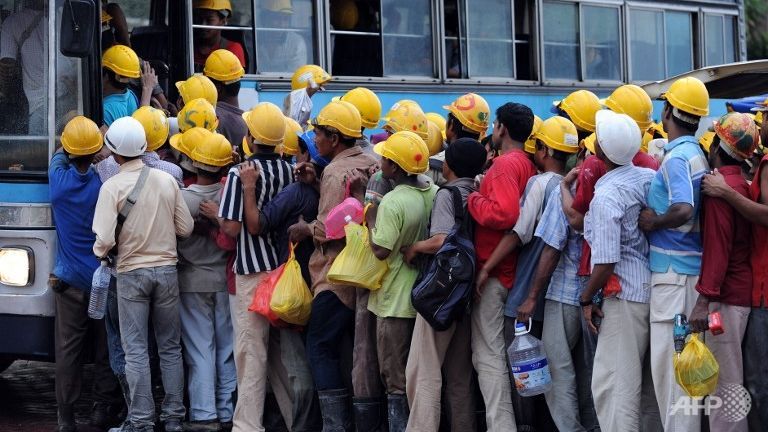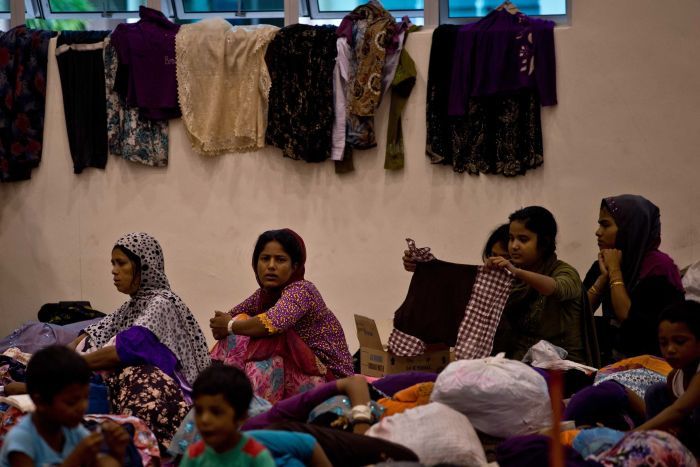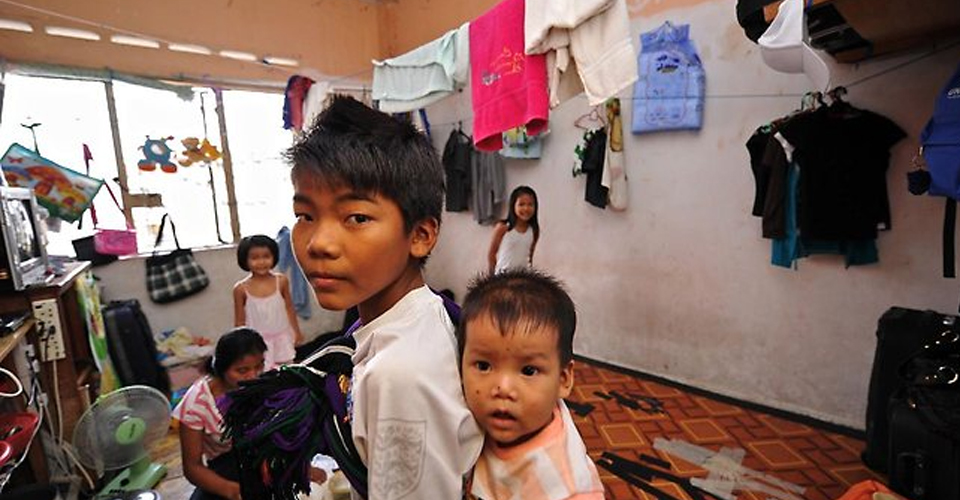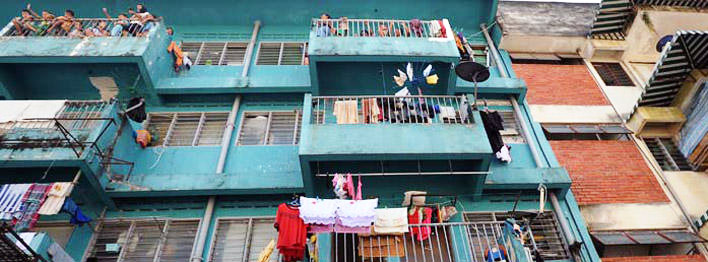Refugees Are Not Illegal Immigrants. Here's Why We Shouldn’t Tell Them To "F*** Off"
Most refugees have fled their war-torn countries, lost their homes, and countless loved ones.
This is just one of the many comments that shows the sentiment and confusion certain Malaysians have toward refugees in the country.
We covered an exposé by the Guardian late last week on the horrifying living conditions of refugees in Malaysia.
The refugees were said to have been kept in deplorable conditions, including being forced to drink toilet water, physically abused, and forced into cramped cells.
While most of the comments verged on shock and sympathy for the refugees in the country and how they have been treated, there were however, comments that were unforgiving and unsympathetic of their condition.
There's also the misconception that refugees are here by choice or that they can go back to their home countries. Read on to understand the huge difference between illegal immigrants and refugees and why refugees should be accepted with open arms.
What's the difference between immigrants and refugees?
Economic Immigrants
United Nations High Commissioner for Refugees (UNHCR) defines immigrants as people who emigrate from their home countries to other parts of the world to seek greener pastures - better job opportunities and living standards.
Their resettlement or emigration to other countries must go through a legal process based on the respective countries' immigration laws and needs. Undocumented immigrants without any legal status are called illegal immigrants and will usually be deported back to their own countries.
Refugees
"A refugee is a person who, owing to well-founded fear of being persecuted for reasons of race, religion, nationality, membership of a particular social group or political opinion, is outside the country of his nationality and is unable or owing to such fear, unwilling to avail himself of the protection of that country." - 1951 Convention Relating to the Status of Refugees, Article 1(A)(2).
The 1951 Refugee Convention defines the term "refugee" and all outlines the rights that came with the status. According to UNHCR, the key document "asserts that a refugee should not be returned to a country where they face serious threats to their life or freedom."
Unlike immigrants, refugees are forced to leave their countries in fear of their safety and lives.
Why do refugees leave their home countries?
Serious/life-threatening discrimination in their home countries
One of the most popular examples of this is the Jews who were forced to flee Nazi-held countries during World War II. Before they were mass murdered and sent to detention and death camps, a large number of Jews fled their European home countries to seek refuge in countries like America and Spain.
A more recent example of this occurrence is the genocide of Shia Muslims by ISIS. The terrorist group has been butchering Shia Muslims within the ISIS-controlled region of Iraq and Syria. The Shiahs there are being persecuted due to their religion and beliefs. ISIS has abducted, killed and tortured hundreds of non-Sunni Muslims, forcing the survivors to flee to other countries.
Armed conflict/war/public disorder
This is happening in major parts of Middle East, where thousands of civilians are killed and displaced due to the ongoing political and religious war in the region. In particular, the Syrian civil war has killed about 450,000 people, injured more than a million and the number of displaced Syrians are growing steadily.
Meanwhile, the Yemen civil war has been raging since 2015. In just a couple of years, the war in Arab's poorest country, Yemen, has killed at least 10,000 people and left 35,000 more injured. The economic problems, political marginalisation, and political struggle, topped with the constant demonstrations, and political instability are some of the reasons that led to the explosion of the bloody war.
When a refugee is stuck in one or more of these situations, he or she will usually go to other countries to protect themselves by seeking asylum in other stable nations where they would have a chance for a fresh start
Malaysia is one such country. There are currently 150,845 refugees and asylum-seekers that are registered with the UNHCR in Malaysia.
Here's a rough breakdown of the refugees based on their nationalities:
- 134,175 of the refugees are from Myanmar - 57,619 Rohingyas, 39,591 Chins, 10,347 Myanmar Muslims, 4,497 Rakhines & Arakanese, and the remaining are other ethnicities from the country.
- 3,196 from Pakistan
- 2,562 from Sri Lanka
- 2,025 from Yemen
- 1,943 from Somalia
- 1,921 from Syria
- 1,463 from Iraq
- 1,041 from Afghanistan
- 684 from Palestine
The rest of the refugees are from other parts of the world. Men make up 67% of the refugees and asylum seekers, while only 33% are women. UNHCR says that there are around 35,941 refugee children below the age of 18 in Malaysia.
The numbers above were obtained from the UNHCR website.
According to UN's 1951 Refugee Convention, refugees have the right to safe asylum and not to be forcibly returned to their countries where their lives or freedom may be at risk.
They should also have basic civil, economic, and social rights as any other foreigner who is a legal resident.
Refugees waiting in line to be processed at the UNHCR refugee centre in Kuala Lumpur, Malaysia.
Image via Mark Baker/AP via Al JazeeraHowever, Malaysia is not a party of the 1951 Refugee Convention, nor does it have any legal framework in place to govern refugees and their rights here.
Refugees in Malaysia do not have access to fundamental rights such as obtaining legal status, lawful employment, formal education, and protection of the Malaysian law, to name a few.
In the eyes of the law, Malaysia has not made any distinction between illegal immigrants and refugees. Thus, to put it simply, refugees in Malaysia are at constant risk of arrest, detention, and exploitation.
So, how do refugees live in Malaysia?
Note that there are no refugees camps in Malaysia, so most refugees live in low-cost flats in towns across the country.
In most cases, they are forced to live with a few other families in these small apartments due to financial constraints and safety. Dozens of refugees can sometimes live in a two-bedroom apartment.
Refugees are not allowed to legally work in Malaysia so they usually resort to working in informal sectors, doing '3D' (dirty, dangerous, and difficult) jobs that locals are mostly uninterested in. Some employers exploit this tricky situation by either ill-treating them, paying them very low wages or none at all.
However, the Malaysian government announced earlier this year that Rohingya refugees will be allowed to work legally in Malaysia starting 1 March with 300 workers deployed in the agriculture and manufacturing industries.
Their children do not have any access to formal education. However, these children can attend education projects run by UNHCR and other NGOs where they are mainly taught four main subjects - English, Mathematics, Science, and Bahasa Melayu.
Sadly, only around 1,000 refugee children benefit from these education projects
The refugees also run community-based schools with the support of NGOs and faith-based groups. Based on the numbers gathered by UNHCR, more than 5,000 refugee children attend these schools.
However, the reach of these schools are restricted by the lack of funds and resources. Without basic or formal education, refugee children will have difficulties becoming self-sufficient and they risk losing the ability to develop themselves mentally and intellectually.
In terms of healthcare, refugees are able to access both public and private healthcare services in the country. The issue, however, lies with the fact that the cost of treatment is doubled or tripled for refugees and the fact that most of them have irregular income make it unaffordable for many refugees.
Watch this video by the Overseas Development Institute that depicts the lives of Rohingya refugees in Malaysia:
All things considered, know that refugees are mostly people that have gone through unimaginable horrors and the pain of losing their homes and loved ones.
Instead of persecuting them, we as a community should come together to help them in whatever way we can to ensure that they are able to rebuild their lives.
For starters, you can get involved with volunteering activities through UNHCR's volunteer programme which includes helping out with teaching and skills-building.
Alternatively, you can make donations that will be used to develop and run programmes that can help refugees in terms of education and healthcare assistance.
For more information, you can either check out UNHCR's website or drop them an email at [email protected] if you have any queries on volunteering.








